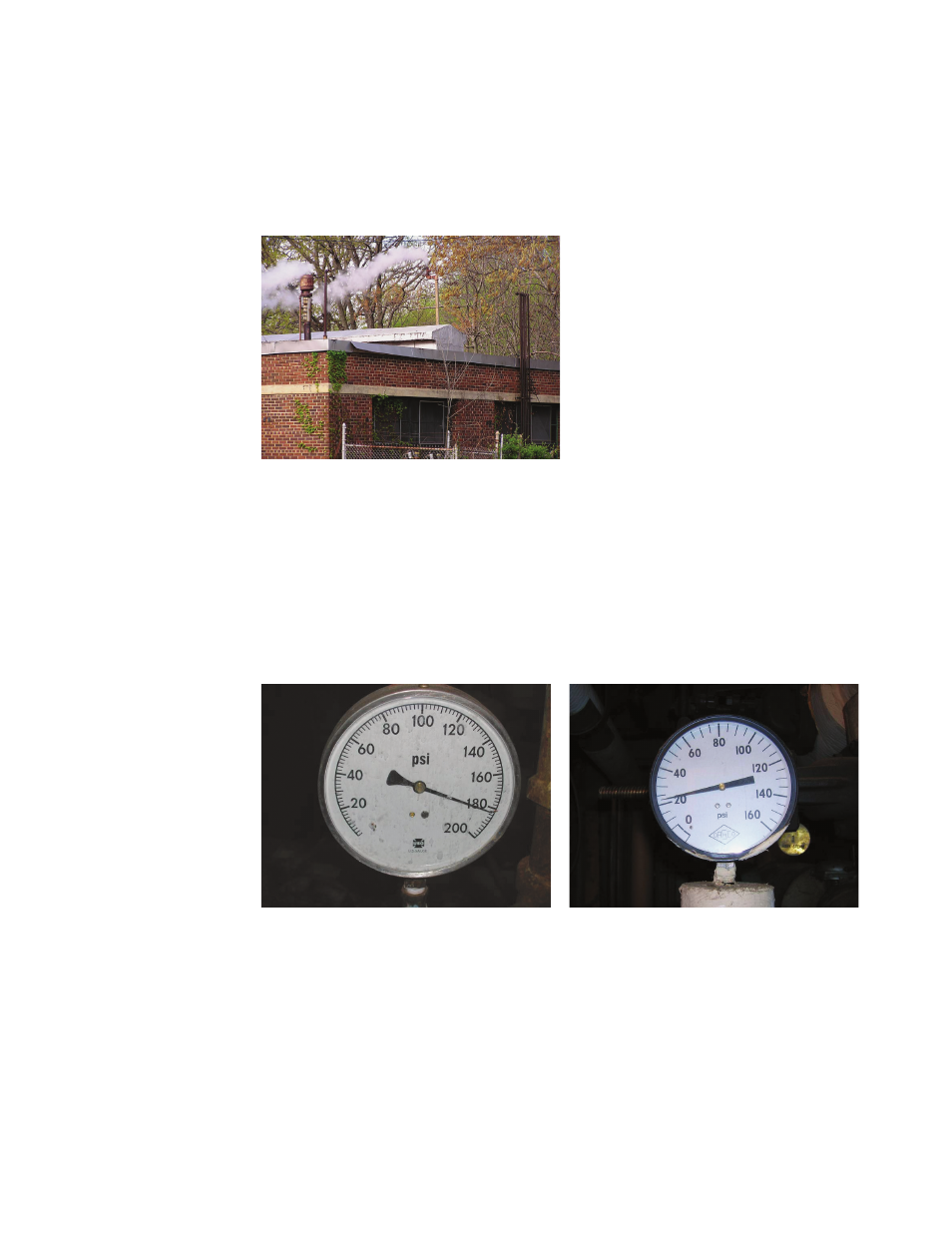Retrotec USACE User Manual
Page 182

D52 ENERGY & PROCESS ASSESSMENT PROTOCOL
be present, presenting a signifi cant danger to the boiler and nearby spaces.
This condition can be caused by faulty boiler controls, inoperable dampers,
or dirty burners. Figure D85 shows combustion gas monitors located in boiler
breeching to analyze products of combustion.
D.4.1.14 Excessive Venting of Steam (Waste)
Figure D86. Steam plumes from vents at a
boiler plant.
Where heated water is under pressure, steam is vented through a vent line
to the outside at condensate receivers and the deaerator (Figure D86). The
steam vented from condensate receivers (especially those handling high-pres-
sure condensate from drop lines along steam mains) can be captured and used
for spot heating purposes. Excessive venting of steam is a waste and should be
avoided.
D.4.1.15 Steam Pressure Greater Than Required by Processes
(Ineffi ciency)
Figure D87. Steam pressure at boiler plant.
Figure D88. Steam pressure at process in
building—1,103.2 kPa (160 psi) lower than
boiler pressure.
Generating steam at a pressure greater than required also results in hotter
steam (e.g., Figures D87 and D88). The excessive temperature means more
heat loss in the system and greater stress on the system components. Steam
pressure is the force that causes steam to move through the system. Pressure-
reducing stations are found near end users to ensure that the users are sup-
plied with the steam pressure they were designed to handle.
